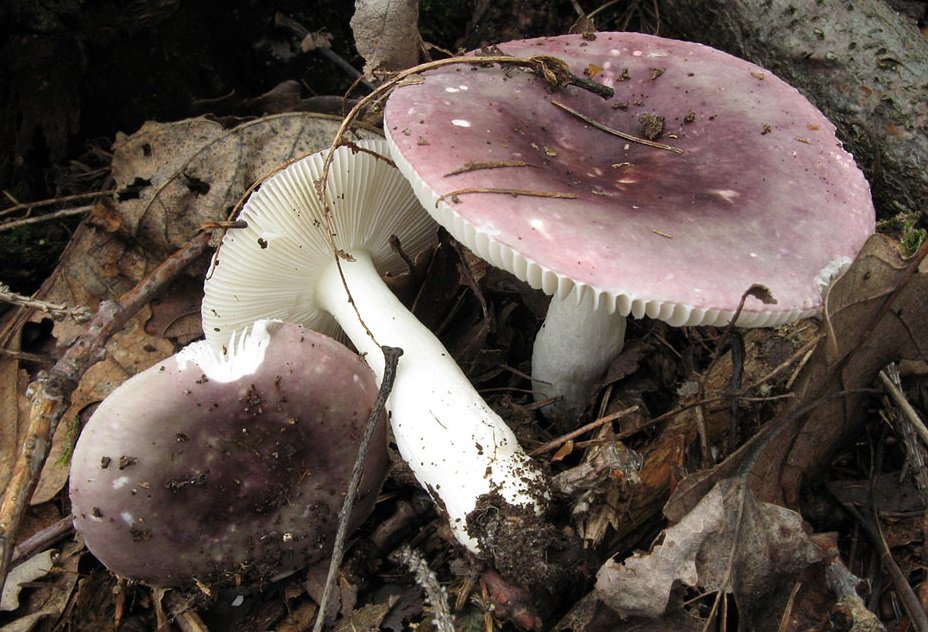Brittle russula (Russula fragilis)
- Division: Basidiomycota (Basidiomycetes)
- Subdivision: Agaricomycotina (Agaricomycetes)
- Class: Agaricomycetes (Agaricomycetes)
- Subclass: Incertae sedis (of uncertain position)
- Order: Russulales (Russulovye)
- Family: Russulaceae (Russula)
- Genus: Russula (Russula)
- Type: Russula fragilis (Russula brittle)

Russula brittle – A color-changing little russula whose hat is often pink-purple and fades with age.
head 2,5-6 cm in diameter, convex at an early age, then from open to concave, along the edge with short scars, translucent plates, pink-violet, sometimes gray-greenish in color.
Leg smooth, white, cylindrical, mealy, often finely striped.
Records remain white for a long time, then become yellowish, sometimes with a jagged edge. The stem is white, 3-7 cm long and 5-15 mm thick. Pulp with a strongly burning taste.
spore white powder.
Споры colorless, with an amyloid mesh ornament, have the form of short ellipses 7-9 x 6-7,5 microns in size.
It often occurs on acidic soils in deciduous, mixed and coniferous forests under birches, pines, oaks, hornbeams, etc. Brittle russula occurs in coniferous and deciduous forests from August to October, less often from June. A mushroom grows in Karelia, the middle zone of the European part of Our Country, the Baltic states, Belarus, and Ukraine.
Season: Summer – autumn (July – October).

Russula brittle is very similar to the inedible russula sardonyx, or lemon-lamella (Russula sardonia), which differs mainly in the hard, black-violet color of the cap and the plates – bright to sulfur-yellow.
The mushroom is conditionally edible, the fourth category. Used only salted. In its raw form, it can cause mild gastrointestinal poisoning.









